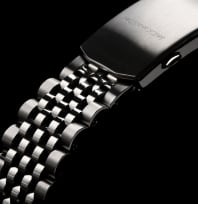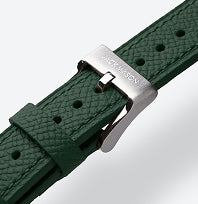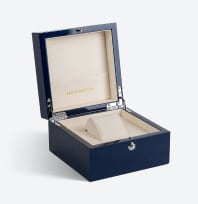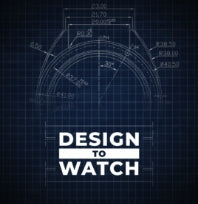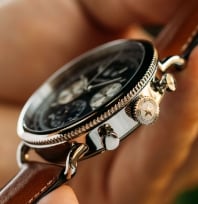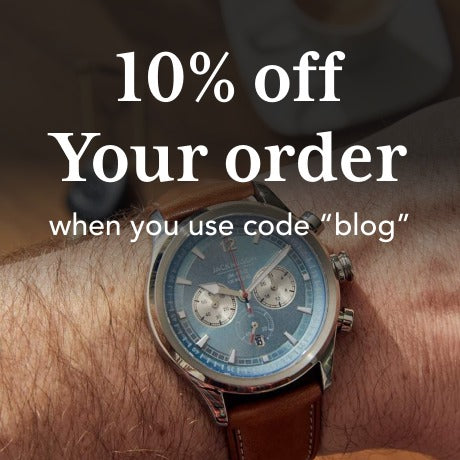Are You A Newcomer To Watch-Wearing?
Making changes to your style can feel like a daunting undertaking. If you don’t tend to branch out much with the way you dress, it’s easy to start feeling stuck in a rut. One of the simplest ways to get out of that rut is to start accessorizing, complementing your outfits with a high-quality wristwatch.
Accessorizing can boost your confidence and take an outfit to the next level, and a watch is one of the most universal and versatile accessories you can own. If you don’t own a wristwatch, or if you have one that you don’t love, it’s time to look for a new one. But where do you begin?
Why Wear A Watch?
Wearing a well-chosen watch lets the world know that you know how to dress for any occasion. Many watches are stylistically versatile enough to pair with formal wear, casual outfits, and everything in between. This versatility makes wearing a watch one of the quickest ways to level up your attire, regardless of the dress code.
In addition to their versatility, watches are convenient. Having quick access to the time on your wrist is incredibly helpful throughout the day. A watch can help to keep you on time, and it can also come in handy for maintaining productivity by serving as a reminder of how much time you have spent working on a task.
You might be thinking, “I have a smartphone – I can just check the time on that.” Consider, though, that there are many circumstances throughout each day where you don’t have access to your phone. Wearing a watch gives you the guarantee that you will know what time it is regardless of the circumstances you are in. Your smartphone may tell the time, but it can also be needlessly distracting in many situations, especially when you are socializing or trying to work. A watch is unobtrusive, giving you the time-telling functionality of your phone without the distractions.
Convenience and versatility are far from all watches have to offer. A watch can also be a striking fashion statement, one that elevates your style dramatically. If you are constantly looking in the mirror after getting dressed and feeling like your outfits are incomplete, a watch may be exactly what you are looking for.
The First Thing You Need to Know: How Watches Work
Now that you’re familiar with several of the biggest perks of watch-wearing, let’s dive into watches’ inner workings. Understanding the mechanisms that make watches tick makes watches even more fascinating – the technology behind each type of timepiece is ingenious. In addition, knowing how watches work can help you spot high-quality and low-quality timepieces and separate the good watches from the not-so-good ones.
The mechanism that allows a watch to tick and tell the time accurately is called its movement. There are three types of watch movements – mechanical, automatic, and quartz. Quartz and automatic watches are currently the most common on the modern watch market, but watches powered by mechanical movement are still sought after by many collectors and enthusiasts.
Mechanical Watches
Mechanical movement, the first mechanism ever designed to power a watch, relies on an intricate combination of delicate components to keep a watch ticking. Mechanical watches are manually wound by the wearer by twisting a small knob on the exterior of the watch – this knob is known as the watch’s crown. The crown is attached to a mechanism that stores up energy in the watch’s mainspring, a small, coiled piece of metal.
Once a mechanical watch has been wound, the mainspring releases its stored energy in timed increments, allowing the watch to keep ticking to a certain degree of accuracy. Mechanical watches may not be quite as accurate as automatic or quartz watches, but they still stay incredibly close, especially considering the delicate inner workings of each mechanical watch and how many moving parts are in play.
Automatic Watches
Automatic movement improved on the mainspring-driven mechanism first employed in mechanical watches, making for a more convenient and user-friendly timepiece overall. Automatic watches are often described as “self-winding.” This is because automatic movement uses a similar winding mechanism to mechanical watches, but requires minimal manual winding by the wearer.
Instead of needing to be periodically manually wound, an automatic watch winds itself by harnessing energy from the wearer’s wrist. As the wearer moves his wrist, the movement engages a weighted rotor inside the watch. As this rotor spins, it winds the watch itself, storing up energy in the watch’s mainspring.
Automatic watches are convenient and low-maintenance alternatives to their mechanical forefathers. Many watch-wearers favor automatic movement because of the distinct weightiness of an automatic watch – these timepieces are typically noticeably heavier than quartz watches. However, it’s worth noting that automatic watches sometimes still need to be manually wound. This is usually only necessary if an automatic watch is left unworn for long periods of time.
Quartz Watches
Quartz movement is a much more recent invention than mechanical or automatic movement. First introduced to the watch market in 1969 by Seiko, quartz movement changed the way watches can be made forever. Quartz movement allowed for levels of accuracy that had never been seen before, thanks to the use of a battery instead of the traditional mechanical design.
The battery in a quartz watch sends an electric current to a piece of quartz inside the watch. This current vibrates the quartz at a specific frequency, allowing the watch’s hands to tick in timed increments. Instead of relying on a mainspring, escapement, and other parts used to maintain accuracy in automatic and mechanical watches, quartz watches’ accuracy is maintained by this battery-powered mechanism.
Quartz watches have continued to prevail in the market since they were first made available in the late 1960s. Many watch-wearers love quartz watches for their convenience, accuracy, and the elimination of manual winding. Quartz watches are some of the most user-friendly timepieces out there, and they are ideal for newcomers to watch-wearing.
I Need A Formal Watch. What Should I
A Beginner's Guide To Buying the Most Fashionable Watch
Wear?
Now that you have a deeper understanding of how watches work, it’s time to decide which type of watch is right for you. One of the major factors that can help you make the right decision is your daily attire. If you tend to dress more formally, the guidelines below can help you pick the right watch to pair with dressier outfits.
- Consider the strap material. Leather (especially black leather) is considered the most fashionable and fitting material to pair with highly formal outfits. At certain levels of formality, a black leather band may be the only appropriate watch strap to wear. If you are donning a suit and tie at least a few times per week, a leather strap is likely your best option. However, metal straps, when chosen well, can also be paired with many formal outfits.
- Consider the type of watch. One of the most versatile watch designs is the dive watch. Dive watches are sleek and simple, featuring minimal complications. These watches have a timeless look and can be paired with both formal and casual outfits.
- Consider the dress code. Depending on your lifestyle, career, and other factors, certain watches may be largely out of the question for you. A field watch, for example, is best worn only in casual settings. On the other hand, racing, aviation, nautical, and dive watches are all typically appropriate to wear in business casual or semi-formal settings.
I Need A Casual Watch. What Should I Wear?
When your main goal is to look great on casual days, there are some specific characteristics you’ll want to look for in a watch. Some watches can blend in seamlessly with both casual and formal outfits.
Others, however, are best worn in casual settings only. Follow the tips below to choose the best possible casual watch.
- Consider the strap material. When you are dressing casually, canvas, metal and leather are all viable options to pair with your outfit. Your watch’s strap is an accessory that you can coordinate with your shoes, belt, and other accessories to give your outfit a cohesive look.
- Consider the type of watch. Field watches, designed for casual wear and to hold up in rugged settings, are a great fit for everyday outfits. These watches pair well with canvas or leather straps. Remember that brown leather is ideal for casual outfits!
- Consider the dress code. If you are looking for a watch to wear to work, pay attention to your workplace’s dress code. An overly casual watch can be a major party foul in some settings. For the office, try to avoid wearing field watches or other watches with canvas straps. A simple watch with a tasteful brown leather strap is one of the best options for pairing with a business casual outfit.
Sources:
https://www.watchtime.com/featured/field-ready-the-complicated-story-of-the-simple-field-watch/
https://www.artofmanliness.com/articles/matching-your-watch-with-your-clothes/


